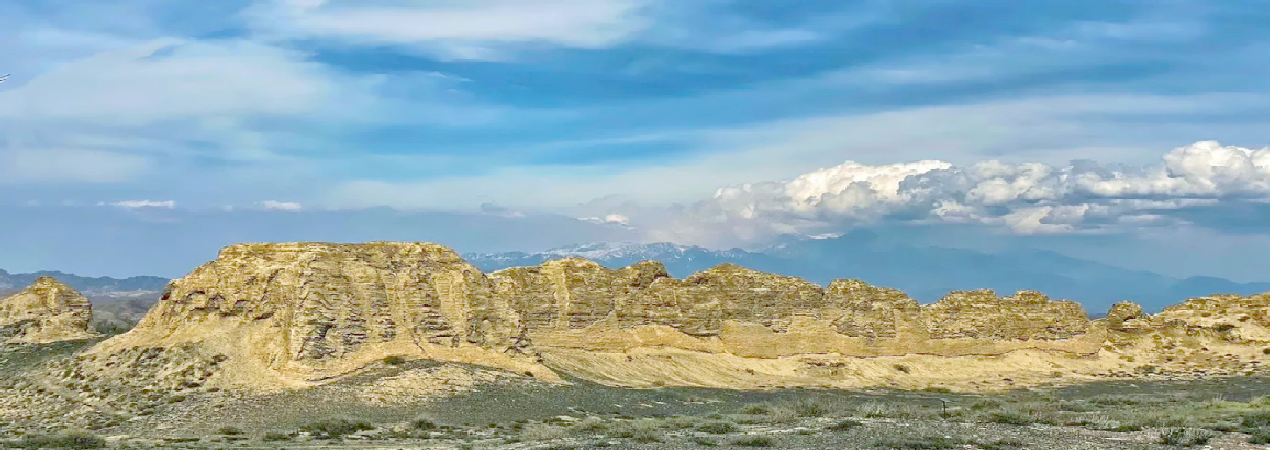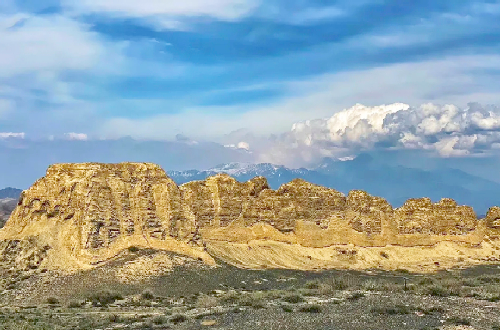Urabo Ancient City

The Urabo Ancient City is located by the Urabo Lake, about 10 kilometers southwest of Urumqi City, Xinjiang. The site is roughly square-shaped, with a north-south length of 550 meters and an east-west width of 450 meters, and the perimeter of the city is over 2 kilometers.
- Chinese name: 乌拉泊古城 Wū Lā Bó Gǔ Chéng
- Suggested time: 1 hour
- Ticket: Free
- Open hours: Open all day
- The best time to visit: Spring, Summer, Autumn
- Address: In the southern suburb of Ürümqi, Xinjiang Uygur Autonomous Region, China
- How to get there: ou can take a taxi or drive there by yourself. There is no direct public bus line specifically for the ancient city at present.
- Surroundings: Ulanbay Reservoir, nearby farmlands and some small villages
The Value of Urabo Ancient City
Tourism Value
The Urabo Ancient City is situated on the shore of Urabo Reservoir in Tianshan District, Urumqi City, with the Tianshan Mountains as its backdrop and beautiful natural scenery surrounding it. The ancient city, Urabo Reservoir, nearby orchards, and farmland complement each other, forming a unique landscape combination that offers tourists an experience of shuttling between historical culture and natural beauty.
Historical Value
 Urabo Ancient City
Urabo Ancient CityUrabo Ancient City is a tangible witness to the ancient history of Urumqi. It is the earliest and best-preserved ancient city discovered in Urumqi today, dating back at least 1,300 years. Pottery fragments dating back to the Tang and Yuan dynasties are scattered throughout the ancient city, and a small number of Song Dynasty porcelain fragments have also been unearthed. Farmers nearby have also picked up many round copper coins with square holes from various dynasties of the Qing Dynasty in the ancient city, including those from the Qianlong to Guangxu dynasties. Through these relics from different eras, one can imagine that this ancient city has experienced a thousand years of historical vicissitudes. Tang Dynasty coins (such as "Kaiyuan Tongbao"), pottery, metalware, glassware, etc. unearthed in the ancient city and its surrounding areas confirm its historical status as an important post station on the northern route of the Silk Road.
Scientific Value
The three-layer walls, corner towers, horse-faced structures, and barbican of the Ulabo Ancient City are living textbooks for studying the city defense system of the Tang Dynasty in the Western Regions. Its rammed earth city-building technology (such as rammed earth layer thickness and material ratio) reflects the adaptability and wisdom of ancient Western Region craftsmen to the geographical environment (such as wind and sand erosion and temperature changes), and provides a physical case for architectural archaeology.
Educational Value
The ancient city is situated in the Ulabo Basin in the southern suburbs of Urumqi. Its rise and fall are closely linked to regional environmental changes. Archaeological findings indicate that the climate during the Tang Dynasty was relatively warm and humid, suitable for agricultural development, while the climate cooled after the Yuan Dynasty (Note: The city was primarily active until the Yuan Dynasty, not the Song and Yuan Dynasties as a combined period), potentially leading to oasis shrinkage and the abandonment of the city site. This human-environment interaction provides empirical evidence for studying ecological changes in the historical period of Northwest China’s arid regions, serving as a case study for environmental science and historical geography education.
Activities to do at Urabo Ancient City
Parent-child study tour: Parents and children participate in study activities together. Children can exercise their hands-on ability and thinking ability in the activities.
Photography competition: You can hold a photography competition themed on the Urabo Ancient City with your team, using lenses to capture the beautiful moments of the ancient city, including its architectural features and surrounding natural scenery.
Drop us a line and we'll connect you with the top China expert in no time!